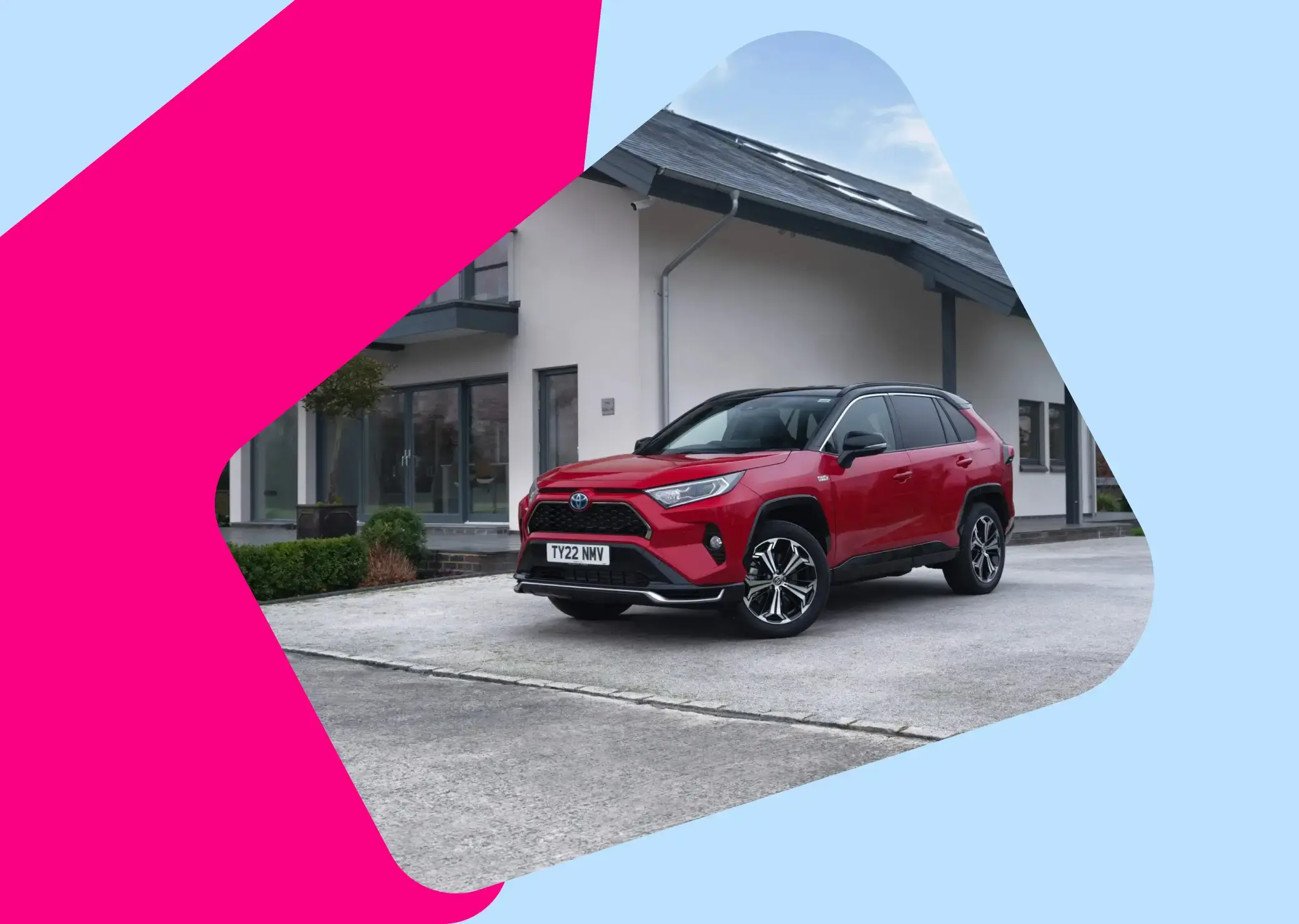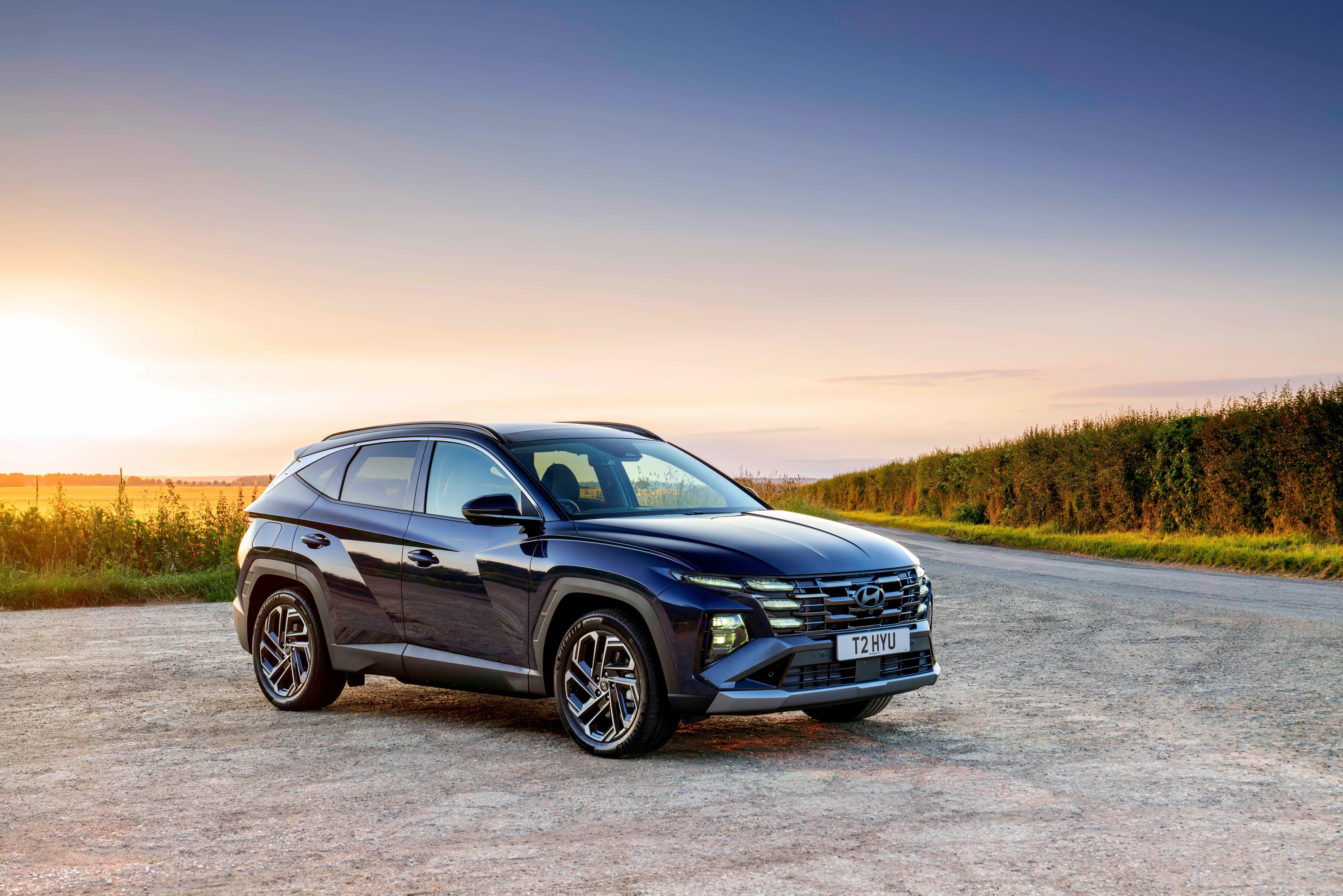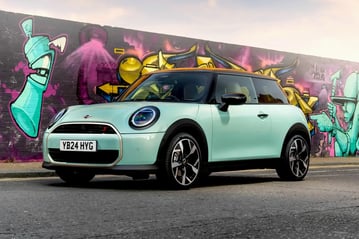- Carmoola
- Blog
- Cars and Gadgets
- What are the best plug-in hybrid cars?
- 🗞 Cars and Gadgets
- Last updated: Jan 8, 2025
- 12 Min Read
What are the best plug-in hybrid cars?
Written by

Verified by


See how much you can borrow in 60 seconds
| Representative Example | |
|---|---|
| Loan amount | £10,000 |
| Interest rate | 13.9% APR |
| 54 payments of | £246 |
| Total cost of credit | £3,284 |
| Option to purchase fee | £1 |
| Total payable | £13,285 |
If you’re trying to decide what kind of car to buy, a plug-in hybrid (or PHEV) could be worth considering. The best plug-in hybrid cars combine the benefits of hybrid and pure-electric cars, allowing you to travel a decent distance using electric power alone. These PHEVs also have an ace up their sleeve though as their electric power is teamed with a petrol or diesel engine meaning there is no chance of ‘range anxiety’.
How we chose these cars
Here, we’ve used our expertise to select what we think are the ten best plug-in hybrid cars you can buy. We’ve included a range of different car types, to suit a variety of needs and budgets. All of them are available to buy used, but most are quite recent models since plug-in hybrid technology is evolving rapidly. One thing to note: all of the maximum electric-only ranges included are the official figures – what you get in real-life driving scenarios will depend heavily on your driving and charging habits.
1. MG HS Plug-in Hybrid
The MG HS Plug-in Hybrid is the newest car on this list, and it’s certainly one of the best for outright value. Introduced in autumn 2024, prices start at £31,495 – which is less than you pay for many similar cars that run purely on petrol.
For the money you get a stylish, thoroughly modern family SUV with lots of interior space and plenty of standard equipment. Features for the entry-level SE model include 19-inch alloy wheels, LED headlights, a reversing camera and all the latest driver assistance safety features. It’s got lots of power and the pure-electric range is longer than most other cars here, at 75 miles. If all that wasn’t enough there’s MG’s seven-year/80,000-mile warranty, which is more generous than the three-year/60,000 mile warranty that most cars come with.

2. Kia Niro Plug-in Hybrid
The Kia Niro is one of only a few cars available with hybrid, plug-in hybrid or pure-electric power. Opt for the plug-in hybrid version and you get a battery-only range of up to 40 miles, as well as a useful boost in power and performance over the hybrid model.
It’s spacious inside, although it’s a shame that the plug-in hybrid has a smaller boot than the hybrid or electric versions because of where its battery is located. The Niro’s high-tech exterior look is mirrored by a very smart interior with a large touchscreen display. All versions are well-equipped and top-spec models have features such as a heated steering wheel and even heated rear seats. We’re focusing on the latest model, which was introduced in 2022, but the previous Niro PHEV model gives you a similar range of benefits for a bit less cash.

3. BMW 330e
The BMW 330e is the plug-in hybrid version of the BMW 3 Series – BMW’s mid-size saloon and estate model. It’s always been one of the best hybrid-powered cars and it’s now even better after an update in 2024. Electric-only range is up to 63 miles, which could be enough for you to commute to work and back on battery power alone. Depending on how far you live from work, and how often you work from home, you might (whisper it quietly) be able to go petrol-free all week…
The hybrid power system gives effortless overtaking and relaxed cruising on the motorway. The rest of the driving experience is the same as any other 3 Series, so it’s responsive and well-balanced through corners. Inside, the 330e has a beautifully designed interior that has a premium look and feel. The saloon is usefully practical but if you need more space there’s an estate version called 330e Touring.

4. Volkswagen Golf GTE
The Volkswagen GTE is an alternative to the Golf GTI that gives you similar hot-hatch fun but also the potential for low-cost, zero-emissions motoring. The latest version – which was introduced in summer 2024 – has an electric-only range of 82 miles – more than double that of the previous version, which was sold new from 2021.
It’s a powerful car that’s fun to drive, yet it also does all the stuff that you’d expect of a Golf. That means it’s practical, comfortable and well-equipped.

5. Mini Countryman Plug-in Hybrid
No other small SUV can offer the blend of style, fun and cost-effectiveness of the Mini Countryman Plug-in Hybrid. This was one of the first mainstream plug-in hybrid SUVs, having been introduced back in 2017, and prices for the earliest versions are now very reasonable. The downside is that it doesn’t have the latest battery tech so the electric-only range is a fairly meagre 26 miles. Still, that may well be enough for you to do the school run for a week on battery power alone.
With its electric motor powering the rear wheels the Countryman PHEV has four-wheel drive, which adds to the already enjoyable drive. Interior space is good for four and the Countryman’s retro-influenced design gives it a uniquely likeable character. There are lots of colour combinations available – from the stylishly subtle to the fabulously flamboyant. The choice is yours!

6. Range Rover Sport P460e
It wasn’t that long ago that the Range Rover Sport was the archetypal ‘Chelsea Tractor’ – a favourite with football stars and often bought with high-powered and extremely thirsty petrol engines. These days it’s a bit more restrained in the way it looks and it’s available with hybrid power.
The plug-in hybrid version gives you the full Range Rover Sport experience so it’s very quick and takes corners more like a hot hatchback than a big SUV. It’s also huge inside, luxurious and packed with all kinds of features as standard. Yet, thanks to its large battery, it’s also capable of 69 miles using electric power only and it should give you more modest fuel and tax bills which will be more in line with the average family car.

7. Hyundai Tucson Plug-in Hybrid
The Hyundai Tucson is hugely popular and it’s easy to see why. For starters, it’s one of the best-looking mid-size SUVs we can think of, with a very distinctive exterior design. It’s just as chic inside, especially after an update in 2024 that introduced a larger touchscreen display and more minimalist design. It’s also spacious, has a large boot and is very well-equipped. Oh, and you get a well-above-average five-year, unlimited mileage warranty from new.
The plug-in hybrid version takes all of the standard Tucson virtues and adds a hybrid system that gives a pure-electric range of up to 39 miles. Not class-leading, but most likely enough for a couple of shopping trips or a good few school runs. It’s a comfortable, relaxing car to drive and you also get the choice of front-wheel drive or four-wheel drive versions.

8. Peugeot 308 Plug-in Hybrid
The Peugeot 308 Plug-in Hybrid is one of the latest generation of Peugeot models that stand out from the crowd thanks to their sharp-edged looks. With its sporty stance and angular details the 308 looks the part on the outside, and it’s similarly cutting-edge on the inside.
You can buy a diesel, hybrid or electric version but our focus is the plug-in hybrid model, which combines a 1.4-litre petrol engine with an electric motor to give strong performance and a pure-electric range of 35 miles. That applies to both the hatchback and the estate version, which is called 308 SW. Charging the battery to full will take less than four hours with a standard home charger, or about seven hours using a domestic three-pin plug.

9. Toyota RAV4 Plug-in
The Toyota RAV4 has come a long way since the first version went on sale some thirty years ago. Yep, thirty years! That first RAV4 was one of the first compact SUVs but the latest model is larger, more practical and, as you’d expect, a lot more advanced. It’s now a mid-size SUV with space for all the family and a wealth of high-tech features as standard.
The plug-in hybrid model is especially appealing, offering the reassurance of four-wheel drive and a battery-only range of up to 46 miles when fully charged. It’s blooming quick, too, with a 0-60mph time of 6.0 seconds – about the same as a Golf GTI. It’s also well-equipped, with standard features including a powered tailgate, four heated seats and electric driver’s seat adjustment. And you get a remarkable ten-year/100,000-mile warranty from new, as long as you have it serviced at a Toyota dealership each year.

10. Volvo XC90
The Volvo XC90 is a pioneering car, introducing a whole new era of Volvo models when it went on sale back in 2015. Its Scandi-cool interior was ahead of its time, too, with a large centre touchscreen and minimalist look that still look good today.
Then there’s the plug-in hybrid model, which was originally labelled ‘Twin Engine’ and later ‘Recharge’. It remains very impressive, with later models having a pure-electric range of about 45 miles. Whether you’re using petrol or electric power or a mix of the two, the XC90 is a supremely smooth and peaceful way to travel. That Zen-like interior helps, as does lots of space and seven very supportive seats. One thing to note: Volvo has just introduced an updated XC90 that’s better than ever but the previous version (pictured here) will cost you less and it’s essentially the same car.

FAQs about plug-in hybrids
What is the difference between a hybrid car and a plug-in hybrid?
What is the difference between a hybrid car and a plug-in hybrid?
The difference between a hybrid car and a plug-in hybrid car is that a plug-in hybrid has a larger battery that can be recharged by plugging into a home or public charger. That gives plug-hybrid cars the ability to cover longer distances using pure electric power – usually between 30 and 80 miles. A standard (or self-charging) hybrid car can usually only cover about five miles on electric power alone.
How far can a plug-in hybrid car travel on electric power?
How far can a plug-in hybrid car travel on electric power?
Are there any government incentives for buying a plug-in hybrid?
Are there any government incentives for buying a plug-in hybrid?
There are no government incentives for buying a new plug-in hybrid car – the previous Plug-in-Car Grant (PiCG) that gave buyers money towards a new plug-in hybrid was only available between 2011 and 2018.
What is better – full hybrid or plug-in hybrid?
What is better – full hybrid or plug-in hybrid?
Deciding whether a full hybrid or plug-in hybrid is best for you depends largely on your lifestyle and driving habits. If you have access to a home or work charger and do lots of short journeys then a plug-in hybrid could be a good option since you’ll be able to keep the battery topped up. If you do lots of long journeys or don’t have a home or work charger to use then a full hybrid might be a better choice.
What is the downside of a plug-in hybrid?
What is the downside of a plug-in hybrid?
The downside of a plug-in hybrid is that you need to keep the battery topped up to get the best out of it. If you don’t recharge the battery a plug-in hybrid will act like a standard hybrid, with the electric motor able to help out the petrol (or diesel) engine but not power the wheels on its own. Plug-in hybrid cars cost more than a standard hybrid car to buy and their larger batteries make them heavier and potentially less efficient. Some plug-in hybrid cars also have a smaller boot than an equivalent petrol, diesel or hybrid car too, because their larger batteries are often located at the base of the boot.
Are plug-in hybrids being phased out?
Are plug-in hybrids being phased out?
Although company car tax incentives for plug-in hybrid cars are being phased out in the UK over the coming years, there’s unlikely to be any shortage of new plug-in hybrid models being introduced because manufacturers are already committed to the technology. When the UK government announced plans to reinstate the ban on sales of new petrol and diesel cars from 2030 it confirmed that ‘some’ new hybrid cars will be allowed to be sold until 2035, although it hasn’t given any more details yet.
See how much you can borrow in 60 seconds
| Representative Example | |
|---|---|
| Loan amount | £10,000 |
| Interest rate | 13.9% APR |
| 54 payments of | £246 |
| Total cost of credit | £3,284 |
| Option to purchase fee | £1 |
| Total payable | £13,285 |
Related articles
Does Financing a Car Build Your Credit?
Financing a car can build credit when you make payments on time, but it can damage your score if you miss payments or take on...
Car Refinancing: What Is It and How It Can Lower Your Monthly Payments
Refinancing your car can give you benefits like lowering your monthly payments or reducing interest costs, depending on your...
Can you drive in the UK on a foreign licence?
If you’re new to the UK, you might be keen to get behind the wheel to explore on the open road. You can usually drive in the UK...

.webp?width=832&height=592&name=customer-support%20(1).webp)










.webp?width=400&height=285&name=online-shoppers-with-dog%20(1).webp)


.jpg?width=500&height=356&name=Vintage%20car%20going%20to%20an%20old%20town-1%20(1).jpg)





